Design Thinking Charrette
This week, we participated in an internal charrette on Design Thinking. evolveEA’s ethos is that design is not only a product but is also a process. This has been integral not only to our graphic and architecture work, but to our sustainable consulting, operational sustainability, and strategic planning projects. We think of design as a methodology for reconstituting an issue. It is not only a problem to be solved, but it also a broader question about our behaviors and desired changes in our physical environment. The charrette was a fun way to have the whole evolveEA team think about design as a process.
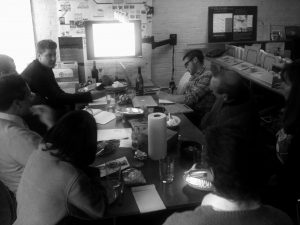
Part 1
We began by discussing an article by Tim Brown, the CEO of IDEO, entitled Design Thinking from the Harvard Business Review. The article explains that getting the whole project team together early on provides an opportunity to look at the context of a project for innovative solutions. Often, asking questions rather than focusing on problems can tease out everyone’s needs while finding even ground to stand on. For example, in our work for the Greater Pittsburgh Community Food Bank, we brought administrators, managers, and various stakeholders together at the beginning of the project to determine what an office expansion really meant for the life of the organization. Together, we were able to assess organizational and spatial priorities before designing a space for them. In the end, the ideas we worked out together saved money and physical resources, while providing a great working environment.
Although we are compelled by IDEO’s methodology, we also took a look at Brian Ling’s presentation Design Thinking is Killing Creativity. Ling’s thesis is that in the end, a designer should still be understood as a designer, and that Design Thinking can often muddle that responsibility. This provoked various thoughts from everyone, but we all seem to agree that there needs to be a balance between collaboration and a designer’s intuition. As a matter of fact, we made a quick list of oppositions that the design process always juggles:
- Intuitive / Logical
- Abductive / Deductive
- Ask ‘If?’ / Proof
- Possibilities / Precedent
- A better way / Precedent
- Meaning / Results
- Experience / Established
- Strategic / Tactical
Part 2
During the second phase of the charrette, everyone presented a designed visual, object, and a space that they find interesting. Here are some highlights:
Dave chose this structure as an inspiring space because all the parts support each other in such a simple way.
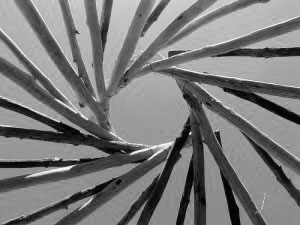
Reciprocal Roof Structure
Zach enjoys the Bouroullec Brother’s Algues component system because one simple component is multiplied to produce something incredibly complex.
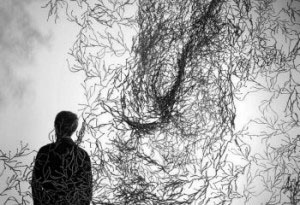
Algues by Bouroullec Brothers
Cole is interested in this graphic’s description of various amounts of information, while the overall impression left by the visual gives you a good sense of what the information communicates.
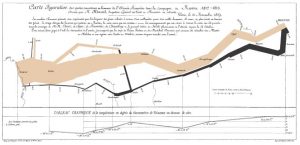
La Method Graphique, E.J. Marey
Part 3
The last phase involved a design problem. Each of us selected a design prompt out of a hat, and we were thrown for a loop when we found out later that we would have to incorporate a specific thing in our response. We didn’t know what anyone else’s prompts were until we each presented, which left a good deal of suspense.
For example, my prompt was to “design a way of identifying and removing the excess from the office” and I had to use Google in my response. Since I already had an idea in mind for a solution, finding out that I had to incorporate Google required me to rethink what “excess” meant and in which way my tool, Google, could influence a design solution.
I decided to have some fun with it, and used google to define “excess”. I created a checklist that our office can share on google docs to determine if something is excessive, and then we watched a quick youtube video on excess and indulgence. It was a pretty fun, light hearted solution.
Zach designed a new system for lighting in the office which reuses plastic bags to create a light shade. He had to use $5 which we all felt he spent pretty well.
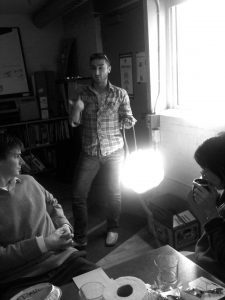
In each phase, we thought about why and how an idea took shape. The last phase gave us a great opportunity to quickly experience a design and decision process. We concluded that although there wasn’t necessarily a right or wrong answer, design provides us with possibilities that shift the paradigm of a problem. We summarized our ideas by listing a few design concepts we think speak to the way in which designers think.
For us, design is contested, collaborative, systemic, networked, concurrent, and iterative. It is a resolution and a compromise. Design is not about problem solving, but about problem seeking. How we create is as important as what we create.

